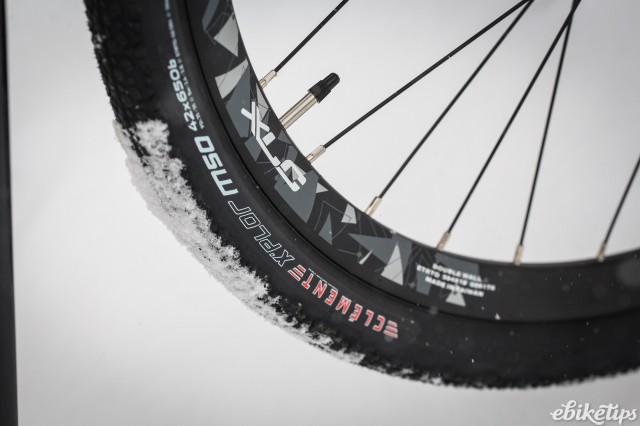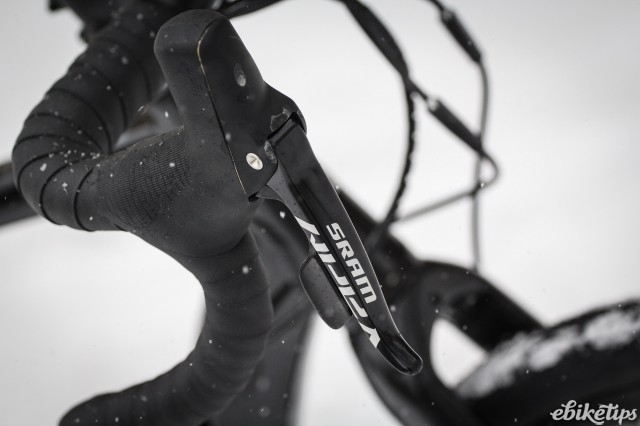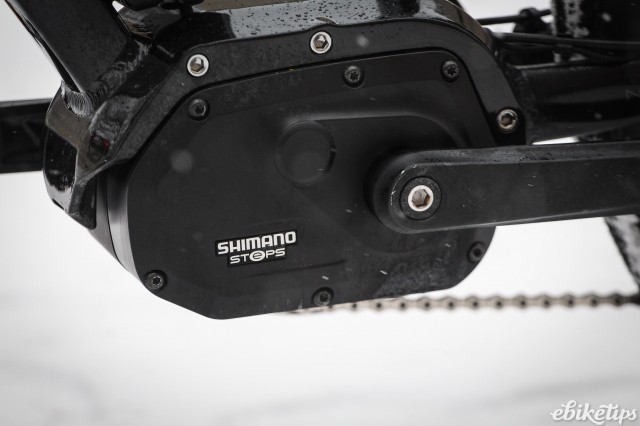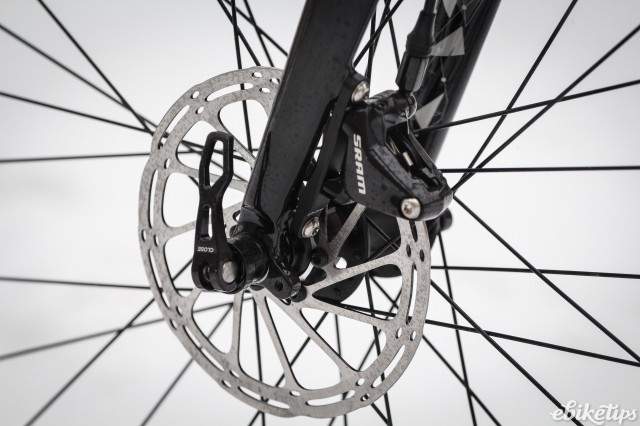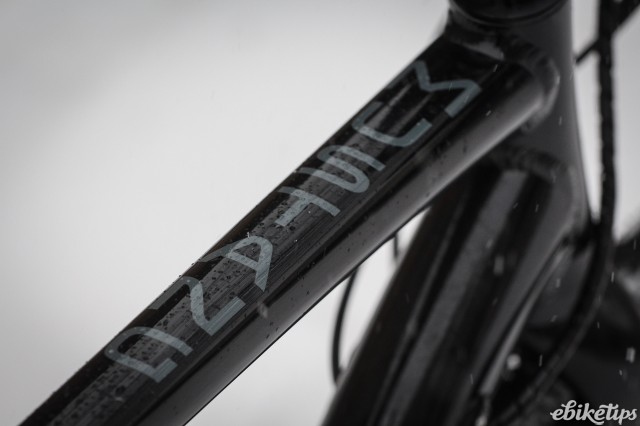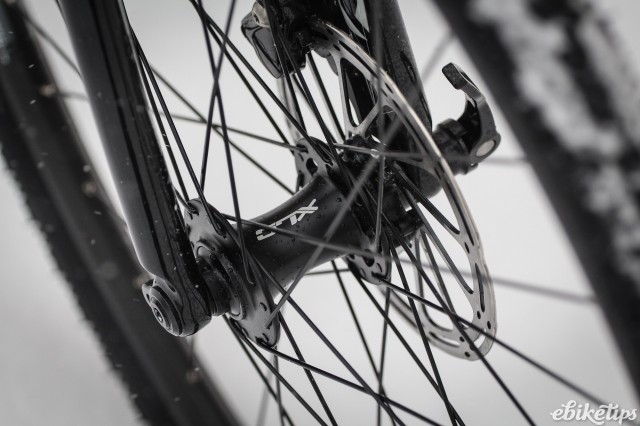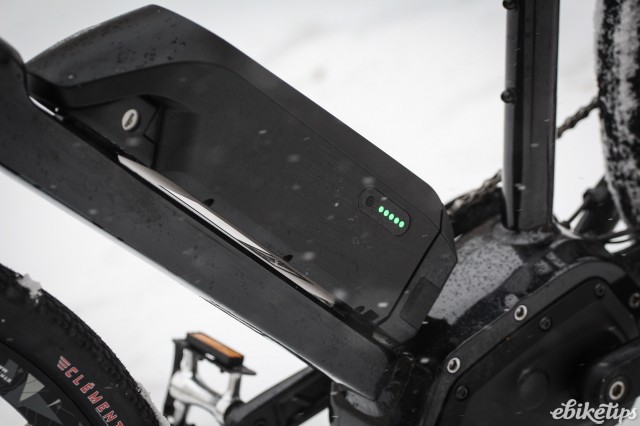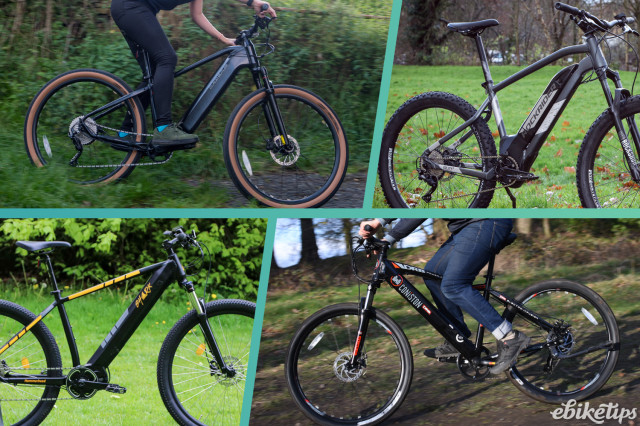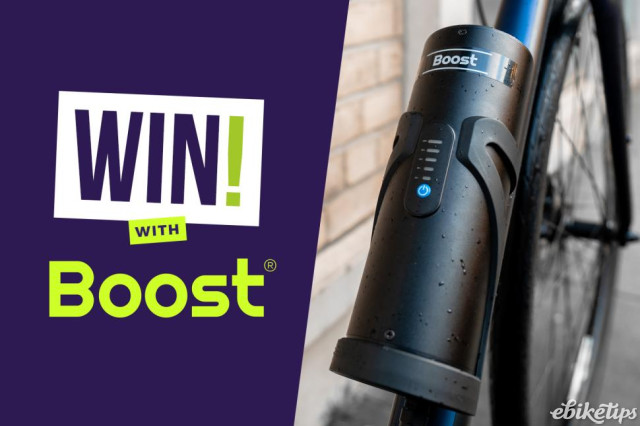Review: Raleigh Mustang Comp E
Overview
- Good quality build
- SRAM Apex drivetrain works well
- Excellent brakes
- Bottom bracket very low, causing pedal strikes
- STEPS city motor not the best on drop bars
- Motor assistance choppy at 25km/h limit
The Mustang is an honest bike, but I felt it was not without flaws especially as it's not a cheap machine at £2,800. You get the mid-mounted motor and downtube battery layout which higher end e-bikes all tend to have – albeit integrated with nowhere near the finesse of more expensive bikes like the Bianchi and Cube e-road bikes we’ve tested recently – and a bit more of an off-road bent than some more tarmac-oriented e-road bikes. The issues with the bottom bracket height and the way assistance cuts in and out at the limit weigh against it, though, and the STEPS city system isn’t a particularly good match for drop bars.
Ride comfort over bad surfaces is helped by the choice of 650b wheels and 42mm Clement tyres. It's a good thing too, as although Raleigh has dropped the seat-stay junction down the seat-tube; this design yields minimal added compliance in the frame, and the fat seatpost doesn’t help either. Geometry is similar to the non-electrified Mustang, which is to say that you are fairly upright. As this isn't aimed at racing snakes, that seems like the right approach to me.
Raleigh has opted for Shimano's STEPS assist system, combined with 1x11 gearing courtesy of SRAM Apex. While this isn't the most powerful version of the Shimano STEPS setup, it'll get you up just about anything you need to ride without breaking a sweat. A wide 11-42 cassette offers gears for climbing and gears for descending.
It's great to see practical touches like mounts for pannier rack and mudguards. This would be an easy bike to ride year round for commuting purposes, even if you live somewhere hilly. The 400Wh battery gives a good range too, although (like any e-bike) it is heavily influenced by your choice of assistance level and the terrain.
Raleigh claims a range of 40km to 125km. I think you'd only see the higher end of this if you were much more frugal with power than I was, and also lived somewhere pretty flat (or ideally permanently tilted downhill). The STEPS head unit has various display modes including one which shows remaining range for all power levels, so you can choose your assistance level depending on how far you have left to go.
It's a nice idea, although it lacks something in implementation, as the remaining range varies wildly depending on what you just rode up or down. Get to the top of a hill and it might say you only have 20km left, but by the time you've got back down to the bottom it'll reassure you that actually it can probably manage another 60km. What it wants is a bit of filtering so it does this calculation based upon the last 10km, say, rather than the last 1km.
Despite having quite a large display, Shimano STEPS has a separate control pod which is wired to the head unit, and which has buttons to increase or decrease assistance, plus a third one to change the display mode. On our test bike, this was mounted on a little stalk sitting off from the handlebar, on which I occasionally whacked my knee. If it was my bike, I think I'd throw this stalk away and fix it onto the bar; I’d question whether these buttons are really right for drop bars. On a flat-bar bike it means the buttons can be positioned right up against the grips, so you can operate them easily with your thumb, but this doesn't really work on a drop bar bike. The head unit sits above the stem, mounted to a clamp which attaches to the handlebar either side of the stem. This leaves no space for a GPS unit like a Garmin or just a phone for navigating, which I would want if I was going exploring.
E-bikes are legally limited to 25kph (15.5mph), above which the assistance cuts out. Exactly how the motor stops assisting you at this point is an area which matters when the motor is fixed to a bike that’ll easily exceed that, like the Mustang will. Here, the Shimano STEPS assistance is not great, cutting in and out abruptly at the speed threshold, meaning that riding at this speed is quite irritating. A well-implemented assistance system does the job progressively and smoothly, making it easy to moderate your pedalling effort such that you sit just within the assisted speed limit. That isn't the case here, and on the flat I'd find that I am constantly bouncing in and out of the limit, with assistance cutting in and out.
SRAM Apex gearing uses its Double-Tap approach where there's only one shift paddle. You push it a bit to change to a higher gear, and then a bit more if you wanted to change in the other direction. If you've not used it before, it might sound confusing, but you get used to it fairly quickly and I like the system particularly in the winter, where it is better compatible with thick gloves than Shimano, in my view. Shifting has a rather more agricultural feel to it than with Shimano, but that aside I had no issues with it. The hydraulic disc brakes are excellent, hauling the weight of the Mustang to a stop quickly and without drama.
One issue which compromised the Mustang both on and off road was its propensity for pedal strikes (when you hit a pedal on the ground, generally while cornering). This is something which you can do on any bike if you lean far enough while pedalling, but the Mustang did it more than just about anything else I can think of. I took some measurements and they made it clear why - the bottom bracket height is 260mm, around 20mm lower than other similar bikes I measured. Combine that with the width of the motor unit mounted between the cranks, meaning that the pedals are spaced around 50mm further apart than a bike without a centrally mounted motor, and you have a bike which doesn't much like being pedalled around corners.
Here's the thing with this bike - it's not a bad bike per se. But there are more niggles than most modern e-bikes, and certainly more than I think you should expect for this sort of money. I have some doubts about the point of an electric-assist gravel bike, which this bike hasn't done much to allay. I'm a big fan of a good gravel bike generally: being able to combine an efficient position on the road with the ability to veer onto rougher terrain should you feel like it is a great mix. I commute on a gravel bike rather than a mountain bike because I can batter along the canal towpath and then hold a decent pace on the road sections.
But once you add a motor, I don't think the aerodynamic efficiency you gain with a drop-bar set up really matters a jot. This is not a bike which you'll really enjoy riding unassisted at speeds over the 25kph cutout. If I was buying an e-bike to commute along the same route which I use on my unassisted gravel bike, I would be much more tempted by some of the flat-bar options in Raleigh's range such as the similarly equipped Strada Elite, which is also more than £500 cheaper than the Mustang.
www.raleigh.co.uk/21048-mustang-comp-electric



